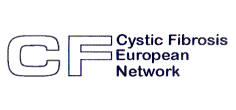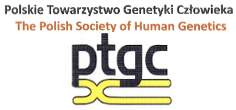Genetic testing
Age-related Macular Degeneration (AMD)
Age-related Macular Degeneration (AMD)
Age-related macular degeneration (AMD) is the leading cause of sight loss in the developed world, affecting around one in ten people over 65 and one in four over 75. The disease involves damage to the macula, the area of the retina where the most precise, sharp vision is formed. In the early stages of the disease, deposits (known as druses) appear in the macula. As the disease progresses, the first symptoms of the disease noticed by the patient are the perception of straight lines as wavy, resulting in a distorted image, and the appearance of a dark spot in front of the eye at the point of focus. In the advanced stage of the disease, there is a reduction in visual acuity. In the absence of appropriate treatment, the patient is at risk of losing central vision, which is essential for basic activities of daily living such as reading, recognising faces and driving. As a rule, the lesions start first in one eye, so the diagnosis is often made when vision in the other eye is also impaired.
The most common is the so-called dry form of age-related macular degeneration, which involves the gradual disappearance of visual receptors. However, about 10-20% of patients have the more dangerous exudative form (manifested by the formation of excessive blood vessels underneath the hypoxic and damaged retina), which, if untreated, leads to vision loss in most cases.
Age-related macular degeneration is a condition influenced by both adverse environmental factors (smoking, overexposure of the retina to UV radiation, hypertension, lipid metabolism disorders, atherosclerosis) and genetic predisposition.
Of the genetic risk factors, variants (polymorphisms) in the CFH gene (Y402H) and in the ARMS2 gene (A69S) are the most significant. If a mutation is present in only one of the two copies of the CFH or ARMS2 gene, the risk of the disease increases 2-4-fold, whereas if a mutation is present on both copies of one of these genes, the risk increases 7-8-fold. If a mutation is present in both copies of the CFH gene and both copies of the ARMS2 gene, the risk of developing the disease increases by as much as 50-fold. In addition, although cigarette smoking in a person without either mutation increases the risk of macular degeneration by only about 2-fold, a smoker with a mutation in the CFH gene has been shown to increase the risk by more than 30-fold.
Thanks to research conducted in the laboratories of Genomed SA, it has become possible to establish a Polygenic Risk Score (PRS) for AMD*.
The test offered involves sequencing of genetic variants in 30 genes (using next-generation sequencing, NGS), including - the analysis of known polymorphisms, which increase the risk of AMD, in the CFH and ARMS2 genes (test code AMD-PRS).
In the case of age-related macular degeneration, it is extremely important to make a diagnosis as early as possible. Recognising the disease at an early stage of development allows measures to be implemented to stop it. These include an appropriate diet, preparations containing lutein, zeaxanthin, vitamins E and C, zinc and copper compounds, and, in the case of the exudative form, medical intervention - injections into the vitreous body into the eye in the form of injections into the eyeball of medications inhibiting the formation of pathological blood vessels, the so-called anti-angiogenic medications (VEGF inhibitors, e.g. Lucentis and Eylea) and, possibly, destruction of vessels using a photodynamic method with lasers and special photosensitive dyes. In addition, avoidance of risk factors such as smoking or exposure of the retina to intense sunlight is important.
For carriers of polymorphisms, correlated with the risk of AMD, in the CFH and/or ARMS2 gene, regular ophthalmological follow-up and the Amsler test (testing vision with a grid of horizontal and vertical lines) and following appropriate diet and lifestyle recommendations are indicated.
*Polygenic Risk Score Impact on Susceptibility to Age-Related Macular Degeneration in Polish Patients. (2022) Wąsowska, A., Teper, S.,Matczyńska, E., Łyszkiewicz, P., Sendecki, A., Machalińska, A., Wylęgała, E., & Boguszewska-Chachulska, A. Journal of clinical medicine, 12(1), 295. https://doi.org/10.3390/jcm12010295










 saliva (spitting into a tube is required for sample collection, therefore the kit is not suitable for children under the age of 5)
saliva (spitting into a tube is required for sample collection, therefore the kit is not suitable for children under the age of 5)
 venous blood collected
venous blood collected